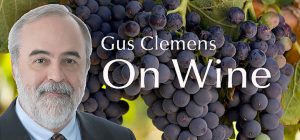Benedictine monk Dom Pérignon did not “invent” Champagne in the late 1600s. He did not exclaim “come quickly, I am tasting the stars!” Champagne’s story is older, more complicated, more interesting.
Pérignon was born in Province of Champagne in 1638. He entered the Benedictine Order when he was 17 and transferred to Abbaye Saint-Pierre d’Hautvillers in 1668, where he successfully ran the wine program until his death in 1715. He was involved in making wine, but not in inventing Champagne.
During Pérignon’s period, in-bottle second fermentation—how we make Champagne today—was a problem, not a goal. When cool weather stopped fermentation before all the sugars had been converted to alcohol and that wine was bottled, come spring the yeast began fermentation again, producing carbon dioxide and potentially turning bottles into bombs. Dom Pérignon did not invent the method of in-bottle fermentation, his career involved trying to prevent it.
Pérignon did champion reduced yields, pinot noir grapes, grape culling, and natural processes of winemaking. Under his leadership, the abbey prospered and the size of its vineyard doubled.
Dom Groussard, a Pérignon successor at the abbey, gets credit for the Pérignon myth. In 1821, 106 years after Pérignon’s death, Groussard credited Pérignon for Champagne’s invention, along with a number of other exaggerated tales. His effort was to increase the abbey’s importance and prestige, not write accurate history.
In 1896, the Syndicat du Commerce used the myth to promote Champagne and the Champagne region. That effort popularized Champagne. By the mid-20th century, their efforts helped establish Champagne as an upscale product selling in the millions.
Sparkling’s story pre-dates Pérignon. The oldest recorded mentions of sparkling wine date to a Benedictine abbey in 1531—more than a century before Pérignon was born. In 1662 English scientist and physician Christopher Merret published a paper on the production method we now call méthode champenoise. Merret’s efforts coincided with English glassmakers developing methods to make stronger glass bottles. The paper appeared six years before Pérignon arrived at his abbey and started making wine.
Tasting notes:
• Marqués de Càceres Cava Brut NV: Champagne on a beer budget; tasty, fun. $12-15 Link to my review
• Champagne Bollinger Special Cuvée Brut NV: Classic from premier maker. Rich, balanced with appropriate acidity, impressive depth, complexity. $50-68 Link to my review
• Champagne Delamotte Brut Rosé NV: Fruit-forward, elegant, sophisticated. Serves well as toasting wine, aperitif, solo for fun of sipping superb bubbly. $65-90 Link to my review
Last round: Gluten free. Dairy free. Fat free. You gotta love the Champagne diet.

